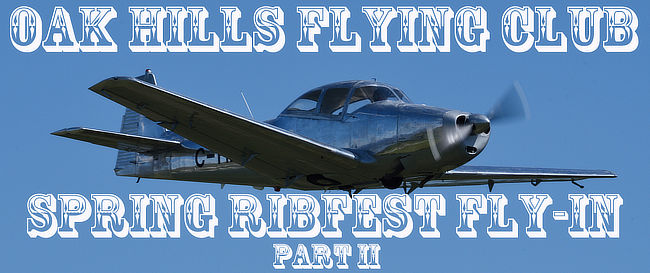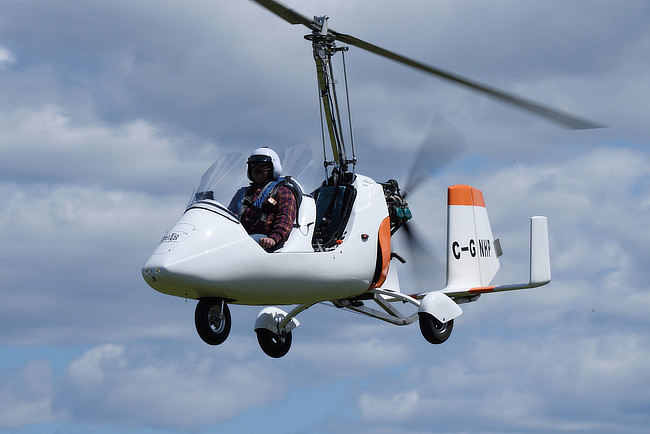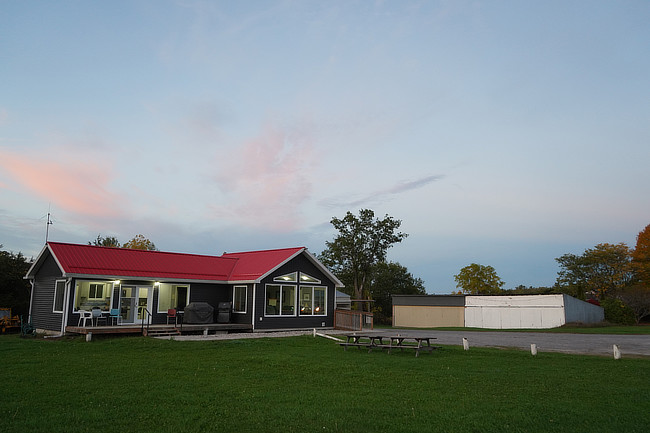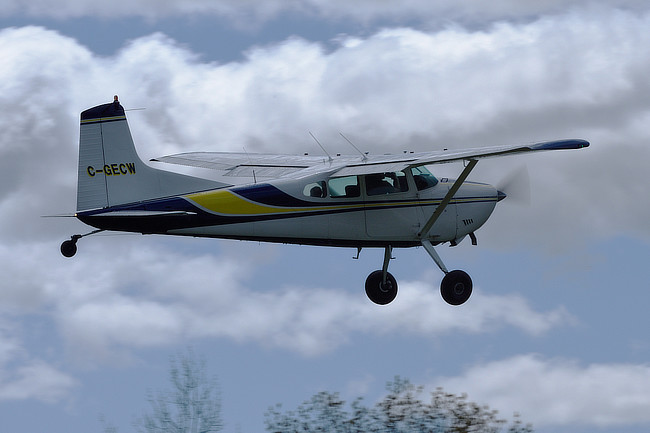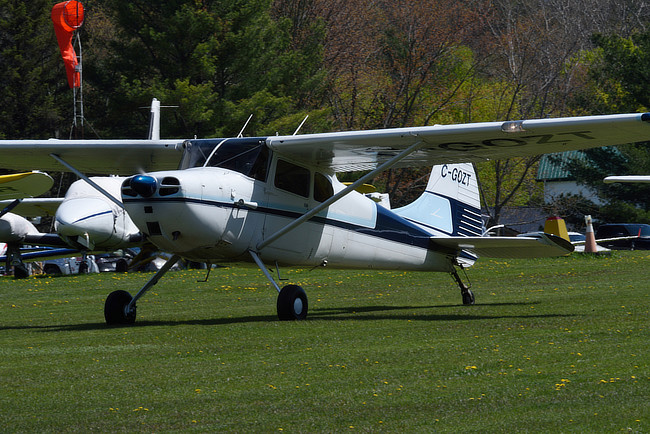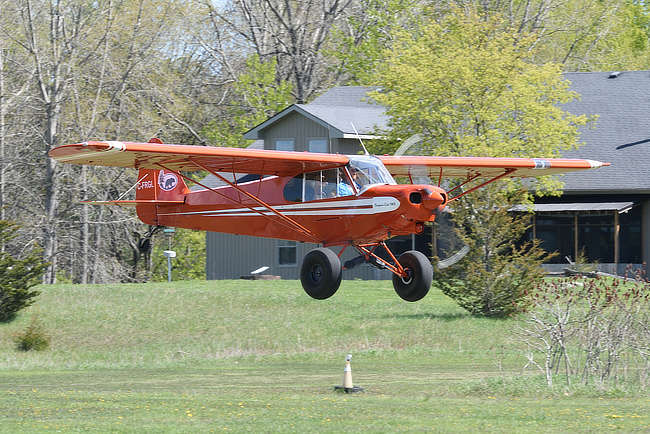ISSUE 805 - June 15, 2023 • Over 7,000 Total Ads Listed • 1,000+ NEW Ads Per Week
This eFlyer Has Been Sent To Over 150,000 Subscribers |
| Oak Hills Flying Club 2023 "Ribfest" Fly-in - Part 2 |
| Kevin Moore, Contributing Writer & Photographer |
|
Last week we had a look at some of the aircraft that visited the 2023 Oak Hills Spring "Ribfest" fly-in as well as some club information and the delicious rib wagon that catered the event. This week we return to Oak Hills for more about the fly-in and the Stirling-Rawdon and Quinte areas.
|
|
| This week we return to the Oak Hills Flying Club to see more aircraft that attended the fly-in and learn a little more about the Stirling area. |
|
|
| Whether you arrive by means of a Cessna 150, left, or a Piper PA-28, right, a visit to the Oak Hills Flying Club is a must for any pilot who enjoys attending a fly-in for that "$100 hamburger," or, in this case, BBQ. |
|
There's lots to do in the Stirling, Oak Hills area including all kinds of shopping in Trenton, Belleville and Stirling, all within about a 15 minute drive of the airport. Known as the "Quinte area," you can go fishing, boating, swimming, hunting as well as many other recreational activities along with all different classes of dining available to you, whether you're wearing shorts and a tshirt or suit and tie, whether you're looking for fast food or fine dining. There are craft brewers, wineries, and a cider house, cheese factories, antique stores and farmer's markets, there's something for everyone.
|
|
|
| The ever-present Cessna aircraft were numerous at the fly-in. |
|
There were a number of Cessna aircraft that visited the fly-in. Cessna is an ever-present aircraft at airports and fly-ins throughout North America, whether privately owned or operated by flying clubs for training and rental operations. Aircraft such as the 150, 152 & 172 are commonly found at flying clubs, used for pilot training or rent, as they are relatively rugged and sturdy flying platforms and capable of taking a certain amount of "unintentional" abuse at the hands of the inexperienced. Many a pilot first learned to fly on a Cessna of some type and, though not necessarily sought after for a privately owned aircraft, there are many who loved them from day one and go on to buy a Cessna of their own at some point in their lives.
|
|
|
| Ultralight aircraft in Canada have become more popular including aircraft such as the Ran's S-6 Coyote II, left, and the Aerotechnic SportStar, right. |
|
Ultralight aircraft have become more popular in Canada over the years for many reasons. Some are relatively easy, quick and more affordable to build as well as to operate and maintain. Having said that, there are also many high end, high tech and more elaborate ultralight aircraft out there these days and have high enough cruise speeds to allow their owners/pilots to travel greater distances in shorter time, becoming long distance trip aircraft. However, you have to have much deeper pockets for those. For many, a low & slow aircraft such as Ran's S-6 Coyote is a fun ultralight aircraft to fly whereas others like something a little faster in the Aerotechnic SportStar. Whatever your preference, ultralight flying is just as much fun as flying heavier aircraft. It's all in personal preference and bank account level!
|
|
|
| The North American/Ryan Navion is an all metal aircraft, designed in the 1940s. It's fast, with retractable undercarriage, a sliding, bubble canopy and a powerful engine. |
|
A more unusual aircraft in the skies of southern Ontario is the North American/Ryan Navion. Designed and built in the 1940s, this slick, all metal aircraft boasts 4 seats, slide back canopy, flaps and retractable undercarriage. Depending on engine, the Navion will cruise around 160mph and can do it on a very reasonable fuel consumption. This Navion, owned by a RCAF Griffon helicopter pilot out of Ottawa, has a 250hp engine and gets off the ground pretty quick for an aircraft of its size. It is a deceptively light aircraft for being all metal and it shows in its performance.
|
|
|
| One of the faster of the visiting aircraft was this Mooney M20, left. A beautiful Cessna 170B, right, departing after lunch. |
|
The Stirling area sits near the eastern end of Lake Ontario and there are many local area attractions from the Stirling Festival Theatre (highly recommended), Oak Hills Golf Course, Ferris Provincial Park, Ranney Gorge Suspension Bridge, King's Mill Conservation Area, the famous Sandbanks Provincial Park, wineries, craft brewers and the National Air Force Museum of Canada (formerly the RCAF Museum - airforcemuseum.ca) at CFB Trenton. There's more to see and do so visit the area and enjoy a weekend or a week.
|
|
|
| The Murphy Rebel on amphib floats is the ideal aircraft for heading to the cottage or a day of fishing on a remote lake. |
|
The only amphibious aircraft that visited the fly-in was a Murphy Rebel on ambib floats. The Murphy Rebel is a Canadian designed STOL aircraft and is one of several Murphy designs from the British Columbia based company (murphyair.com). The Rebel is a 2-place (possible 3-place) high wing aircraft that is purchased in kit form. If you're a dedicated builder, the kit can be completed in a year. The Rebel can be flown with wheels (including tundra tyres), floats or skis. It is ideal for short field operations with a take off roll, depending on engine, of 300' and landing roll of 400'. It has a cruise speed of 120mph, a power off stall speed of 44mph, rate of climb of 1200 ft/min and a range in excess of 700 miles.
|
|
|
| The Aerostar Festival is a low wing, 2 place ultralight that offers comfort, great pilot visibility and a decent cruise. |
|
Another, somewhat uncommon aircraft, is the Aerostar Festival R40 FSD. This low wing ultralight aircraft is from Romania and fits in the Canadian ultralight category and the US Light Sport Aircraft category. It has side-by-side seating (pilot and passenger), fixed tricycle undercarriage and manual flaps. It is an all aluminum built aircraft with a cruise of 94mph, stall speed of 42mph and a range of roughly 500 miles. The standard engine type is a Rotax 912ULS which is a four cylinder liquid and air cooled, 4-stroke engine with a 3-blade propeller.
|
|
|
| The bigger brother to the Aeronca Champ is the Aeronca Chief 11C, a side-by-side cockpit verses the Champ's tandem seating. |
|
Though the Aeronca Champ is a very popular vintage taildragger, it's slightly bigger brother, the Aeronca Chief, is preferred by some pilots for its side-by-side seating rather than the tandem (front & back) seating in the Champ. The Chief entered production in 1945 and was produced until 1950 with more than 2300 of the type built and was designed as a training aircraft, and for the private pilot's personal use. The Chief shares identical parts with both its baby brother, the Champ, and it's bigger brother, the Sedan. The Chief carries a crew of 2 (pilot & passenger), has a maximum speed of 100mph, a cruise of 95mph and a stall speed of 38mph with a range of about 420 miles.
|
|
|
| With a 49'3" wingspan, the self-launching ASW-24E Sailplane turned a few heads at the fly-in when it took to the skies for an afternoon of soaring. |
|
Another aircraft that isn't overly common was the self-launching "motorglider," ASW-24E, that took to the air, turning many heads. The ASW-24 has an engine located behind the pilot, a Rotax 275 mounted on a retractable pylon that folds back down into the fuselage after launch, once the pilot finds lift, whether thermals, ridge lift or a wave, depending on where the pilot is flying. The ASW-24E has a wingspan of 15m (49'3"), a stall speed of 43mph and a smooth air Vne of 170mph. On this afternoon, owner/pilot Carsten Schraeder was gone for over 5 hours, having found thermals to the north of Stirling, spending hours soaring in the southeastern Ontario skies.
|
|
|
| Heading home after the fly-in, the Bellanca Citabria, left, and the Aeronca Champ, right, climb away, heading home. |
|
Oak Hills Flying Club at Stirling Airport is a great place to hangar your aeroplane, store your sailplane or hang out for a day during their fly-in enjoying a good meal and great company, whether you know a pilot there, go to meet pilots and/or like minded people or you just want to watch aeroplanes come and go. The area has lots to offer, whether spring, summer, autumn or winter, there's always something to do in Stirling-Rawdon!
|
|
| Oak Hills Flying Club has a beautifully built club building with lots of amenities for local and visiting pilots. |
|
| 1965 Cessna 185 heads home after a fill of wonderful BBQ. |
|
|
| Cessna 172s departing OHFC at the end of the fly-in. |
|
| Cessna 170B parked on the grass while the pilot, and his crew, enjoy lunch. |
|
| Lovely Piper PA-18 Super Cub with tundra tyres departs for home. |
| By Kevin Moore, Contributing Writer & Photographer
|
|
| |
|


